To enjoy riding your bicycle, the ride should be comfortable and convenient. And to do this, you need to monitor your bicycle tire pressure, which affects speed, safety, vehicle life, and tire wear.
Why You Need to Check Tire Pressure
Rarely do people measure the tire pressure before riding, and yet so much depends on its indicators:
- If the wheels are under-inflated – worse “rolling”, during the ride the cyclist has to put more effort to move.
- If it is low, there is a risk that the tire will break the rim in two places if the wheel hits the slightest obstacle;
- If the pressure in the tubes is close to the lower limit, the “hitch” with the road surface increases – especially critical when traveling on terrain with changing surfaces and off-road.
- If the wheels are overinflated above the limits imposed by the manufacturer, it is also possible to damage the camera against the rim on the inside, where the protective tape of rubber and the place of entry of spokes are located.
- If the values are too high, the tube wear increases several times.
- But if the figures are close to the upper limit, on the asphalt bike speed increases, which allows the owner to save a lot of effort.
Therefore, it is so important to know what the pressure should be in the tires of the bicycle, and to find a suitable help knowledge and experience of riding.
Units of measurement
If in the past the pressure in the tires was measured by feeling the wheels with the fingers, now there is a more accurate way. No amount of tactile sensation will tell you how perfectly inflated your bicycle tires are. A pressure gauge is used to determine the exact pressure level, which can be indicated by three units of measurement:
- BAR (bar – another name for “atmosphere”);
- kPa – in kilopascals;
- PSI – pressure in pounds per square inch.
In the U.S. and Western European markets, PSI is commonly used. In Russia and post-Soviet countries, the bar designation is closer. And in kilopascals (pascals) – can be found infrequently, although it is the most modern unit of measurement and metrically the most correct.
If you know the ratio of these units of measurement, it is not difficult to convert them to values close to your own:
1Bar (atmosphere)=100kPa (100000Pa)=14.504PSI or 1PSI = 0.069Bar.
Bicycle Tire Markings
All three systems of acceptable pressure markings can sometimes be found on bicycle tires. The amount of inflation allowed is indicated on the side of the tire. Considering the conditions in which the bike will be used, on what surfaces to ride, its owner determines the desired value, the benefit that the tires prescribe min and max range.
- On the rubber, you see numbers up to 10 (as in 2.8-4.6) – hence the measurement in atmospheres (Bar).
- From tens to hundreds (40.65; 95-135) – in pounds per square inch (PSI).
- You have three digits in front of you (let’s say 280-460) or there is a prefix “k” – in kilopascals.
Important! It is not recommended to overestimate the figures written on the sidewall of the tire to avoid damage.
Standard pressure
In case you have purchased tires from an unknown manufacturer, you may find that they do not have units or are labeled in units you are unfamiliar with. Then you can calculate how much to inflate your bike tires based on the weight and type of bike. This table tells you what your tire pressure should be in bars (atm) and PSI for mountain bikes:
| Cyclist weight (kg) | Pressure (psi) | Pressure (Bar) |
|---|---|---|
| 50 | 35-38 | 2,38-2,59 |
| 63 | 37-40 | 2,52-2,72 |
| 77 | 40-43 | 2,72-2,93 |
| 91 | 42-45 | 2,86-3,06 |
| 105 | 45-48 | 3,06-3,27 |
| 118 | 47-50 | 3,2-3,4 |
For a road bike, the tire pressure should be maintained in the higher range of 6.5 to 9 Bar (up to 130 psi, respectively).
Children’s bicycles
For a child beginner cyclist, it is best to inflate the tires to the maximum allowable limits. On such tires, the cyclist spends less effort to move, which makes learning to ride the bike easier and simpler.
If your child weighs close to 50 kg, refer to the bar or psi units in the table above.
Seasonal changes
Naturally, seasonal changes make their own demands on bikes, especially for mountain bikes. In the summer, you should not push your bike’s tire pressure to the max. Because of the hot asphalt air inside the tire also heats up and expands, due to which the camera increases in volume, and therefore. And in general, as written above, overinflated tires wear out faster.
In winter time, it is recommended to inflate the tires to the maximum – the lower temperatures cool the air in them, and the chambers shrink in size, which contributes to the reduction of pressure. Therefore, to “squeeze” from the tread all that it is capable of, especially from studded, inflate the bicycle wheels to the highest limits.
Changes in weight
In the table, we’ve already looked at how much pressure a bicycle’s tires should have in relation to the weight of its owner. The greater the weight of the cyclist or the more serious the load the bike has to carry, the higher the tire pressure should be. Heavy loads squeeze the tires, and if the tubes are not inflated enough, the owner will quite quickly encounter problems that result in low tire pressure. For every additional kilogram of rider weight over 50, 1% pressure should be added.
Approximate values by type of rubber
Based on what will be the surface of the track, the cyclist selects the type of tires for his two-wheeled companion. Coating, of course, dictates what should be the level of inflation of bicycle wheels.
- Slick and semi-slick bicycle tires are used for traveling on paved surfaces and unpaved. Such tires are better to inflate to the maximum – the less pressure in them, the worse the rolling and lower the speed of riding. Except in the heat it is acceptable to minimize the pressure by 0,2-0,4 below the maximum, which is prescribed by the manufacturer on the side of the tire.
- Tires for mountain bikes (used for riding on soft dirt), as well as winter rubber for snow and ice crust pumped slightly higher than normal – this will give excellent grip on the surface.
- For cross-country tires, three to four bars is considered optimal. Over-inflated wheels above these figures can simply not withstand the peak load and explode. A pumped under-inflated will force the rider to spend on the movement of a huge amount of effort.
- For trick bikes, “shod” in the tire with a complex tread, it is better to maintain the pressure indicators at the average level – choose between max and min value, prescribed on the side. This way you get the best grip on the road surface. As you ride, you can adjust the pressure setting based on the surface conditions and how much grip you need to achieve.
It also matters what type of bike you choose. The most commonly purchased mountain bikes have a wheel diameter of 26″, which makes them easy to ride on both city asphalt and cross-country terrain.
It’s worth remembering that the larger the wheel diameter, the more air you have to pump into them. However, if we take the same mountain bikes, in their case does not matter the diameter of the wheels – 26 or 29″, to determine the right level of pressure is still better to consider the weight of the rider, his riding style and type of terrain.
You gradually work out how many atmospheres you should have in your tires, based on your riding habits and route.
How to check pressure after inflation
You can only find out the exact reading with a pressure gauge. Buy a bike pump already with a pressure gauge, or at least a separate bike pressure gauge. At the service station you can also check the pressure and pump up the wheels with a car pump if necessary. However, here you need to be extremely careful and watch the pressure. Otherwise you can get carried away and spoil the tires.
Over time, you can learn to tactilely determine how inflated your tires are. To this end, squeeze the tire with your fingers when you first inflate it and know exactly how much pressure it has. Gradually, you’ll remember this feeling of optimally inflated tires.
How tire pressure depends on riding style
The cyclist’s riding style and the quality of the pavement on which the bike will be used also determines what the pressure level in the bicycle wheels should be.
Warning. The more aggressive your riding, the more you need to inflate the tires. This is especially important when riding on a flat track.
This rule does not apply to riders who use bikes for downhill and various tricks. Here, it is better to inflate the rubber to the average indicators.
How to choose the ideal pressure for the bike
There are no universal rules on how many atmospheres you need to inflate the wheels on the bike. You should know how to judge your riding style, route and common sense. You can find the manufacturer’s min and max values on the tire, but only you know your own weight, whether it is worth considering when inflating the tires, under what conditions you will use the bike, whether you will ride it, avoiding potholes and bumps or rushing forward with irrepressible energy and overcoming obstacles. The same level of pressure for one rider will be optimal, for another it will seem too low, for a third – not high enough. Gaining practical experience, you will understand what the pressure in the bicycle tires will be ideal for you.
To summarize
Bicycle tire pressure is an important parameter to consider when riding. Keep it in check at all times to ensure that you ride comfortably and safely. A blown tire on the road is not only an unfortunate nuisance, but also a dangerous accident if you are riding along a busy highway. To be sure of your two-wheeled companion, find the best pressure for its wheels and ride with pleasure.






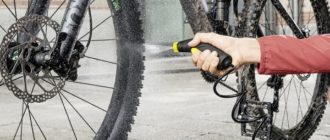

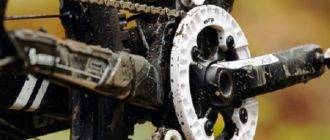
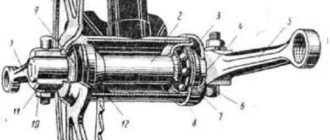
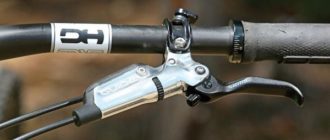
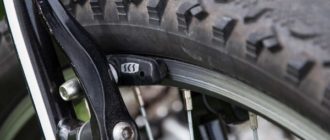
Great article! It’s so important to have the right tire pressure for biking. The chart and tips are really helpful in making sure that cyclists can get the most out of their rides!